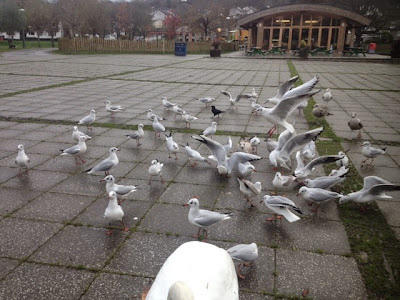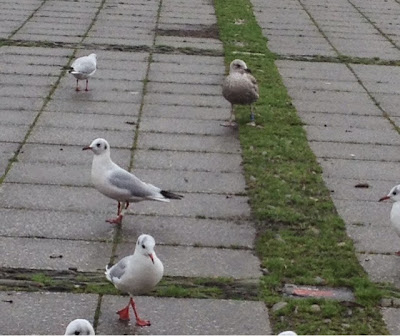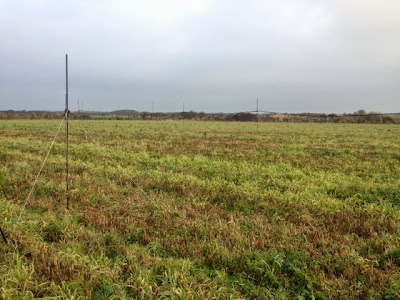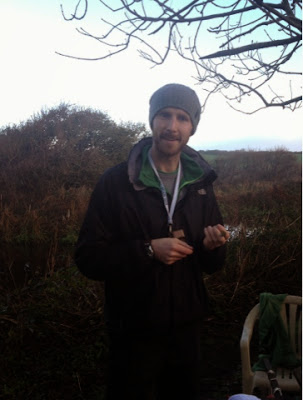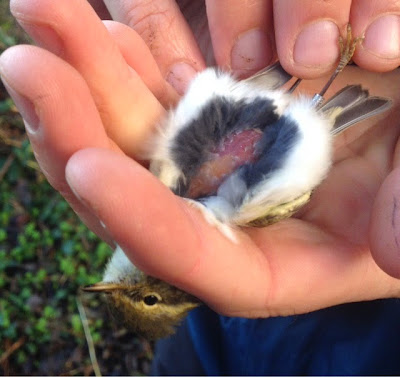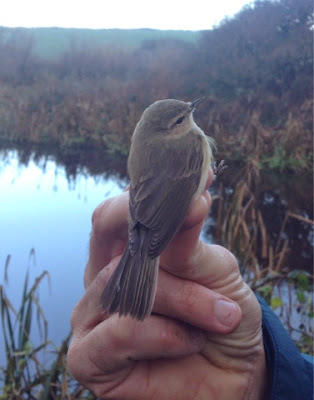After a really good September's ringing at Nanjizal, hopes were high for an even better October, but sadly
it wasn't to be. Strong winds, rain and fog reduced October ringing
sessions considerably across the county and despite its sheltered location, Nanjizal suffered as much as any.
Despite the weather though, over 800 birds were ringed during October, including 355 Blackcap and 135 Chiffchaff. The late run of Blackcaps brought the year total up to an incredible 1253, which is already by far the highest-ever annual total ringed in the county. The
BTO online ringing report shows county ringing totals back to 2006, and the highest Blackcap total since then was 624 birds in 2011. In fact, the average annual total since 2006 is just 389 birds! So even considering the well-documented population increase in Blackcaps in recent years, the massive jump in ringing totals is amazing.
Other species ringed in good numbers included Sedge Warbler (bringing the year total to 1204), Whitethroat (340) and Grasshopper Warbler (136). On the rarity front, with so many Yellow-browed Warblers arriving up-country, we were hoping to beat last years total of 12 birds ringed, but just six were ringed in
October: maybe November will see a big push of birds heading
west. The pick of the bunch though, was a very smart Little Bunting ringed on 11th October; still not an annual visitor to the county.
Although the
east coast has recently seen huge numbers of thrushes arriving in the last week, very few have been coming through
Cornwall. Also seemingly lacking are the expected big numbers of Chaffinch, although
the last few days has seen a notable increase, as well as the first flushes of Redwing and Song
Thrush. So here's hoping they arrive soon, before Nanjizal closes down for the winter...




